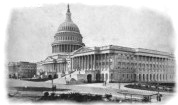District Wharf
Historical Markers on the pier at the district wharf, southwest Washington, DC
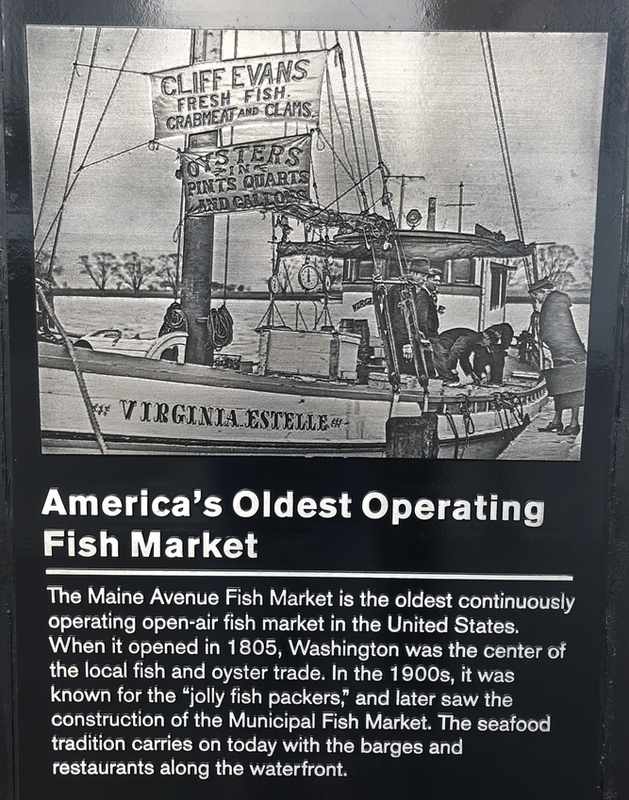 |
America's Oldest Operating Fish MarketThe Maine Avenue Fish Market is the oldest continuously operating open-air fish market in the United States. When it opened in 1805, Washington was the center of the local fish and oyster trade. In the 1900s, it was known for the "jolly fish packers," and later saw the construction of the Municipal Fish Market. The seafood tradition carries on today with the barges and restaurants along the waterfront. |
Long BridgeOriginally constructed in 1809 as a mile-long wooden toll bridge connecting the District with Virginia, Long Bridge has seen many transformations and additions. In 1861, five days after the fall of Fort Sumpter, Robert E. Lee rode south on Long Bridge after declining command of the Union Army. In 1881, ice piled up against the bridge, causing an unprecedented flood that put 254 acres of DC under six feet of water and led to the creation of East Potomac Park. |
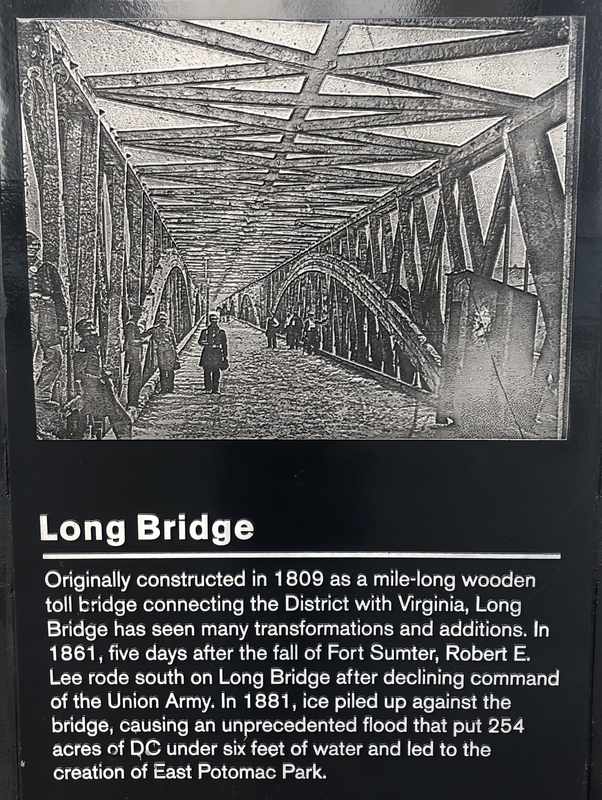
|
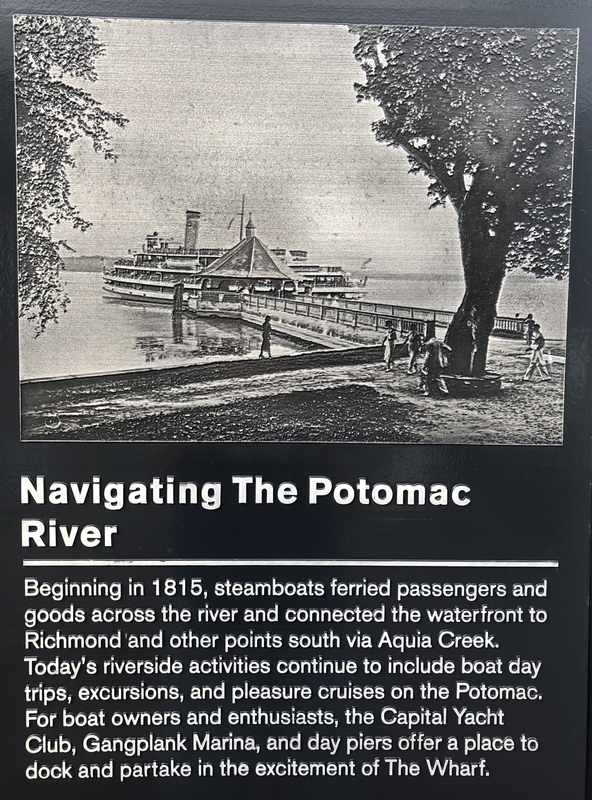 |
Navigating the Potomac RiverBeginning in 1815, steamboats ferried passengers and goods across the river and connected the waterfront to Richmond and other points via Aquia Creek. Today's riverside activities continue to include boat day trips, excursions, and pleasure cruises on the Potomac. For boat owners and enthusiasts, the Capital Yacht Club, Gangplank Marina, and day piers offer a place to dock and partake in the excitement of The Wharf. |
Waterfront Industry and CommerceIn the 1840s, the Southwest Waterfront was developing into a major commercial seaport and took on an industrial character. Buildings and warehouses were constructed to accommodate coal, ice, and lumber trades, as well as slaughterhouses, bars, and restaurants. Some of the earliest proprietors included J.S. Harvey & Co., "dealers in wood, coal, and groceries," as well as L.J. Middleton's ice business. |
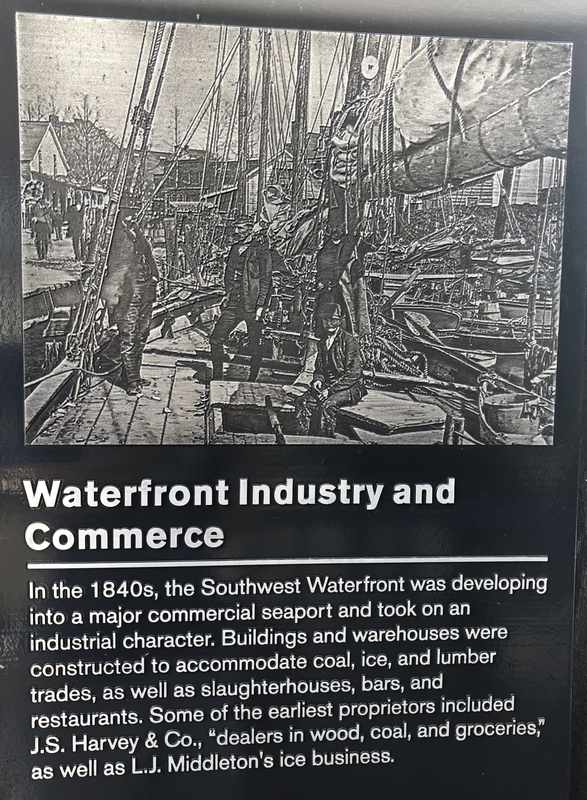 |
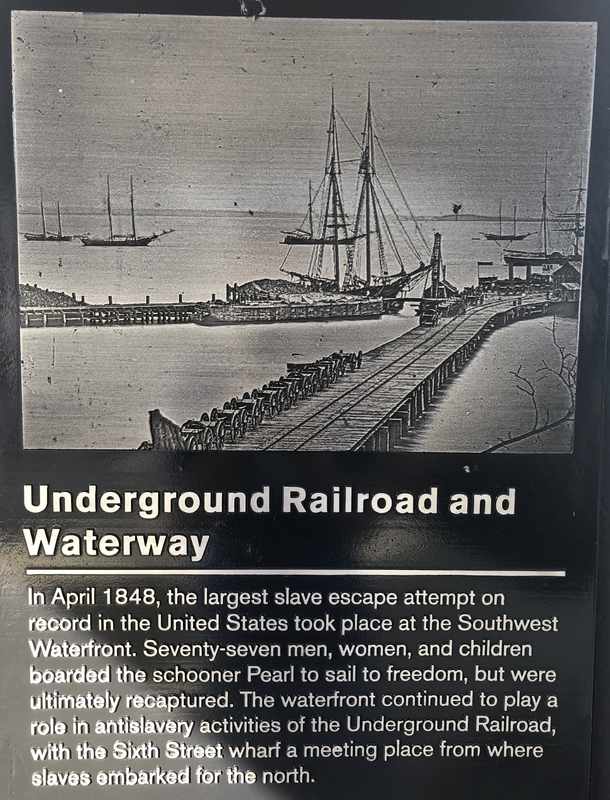 |
Underground Railroad and WaterwayIn April 1848, the largest slave escape attempt on record in the Unites States took place at the Southwest Waterfront. Seventy-seven men, women, and children boarded the schooner Pearl to sail to freedom, but were ultimately recaptured. The waterfront continued to play a role in antislavery activities of the Underground Railroad, with the Sixth Street wharf a meeting place from where slaves embarked for the north. |
Civil War at the Southwest WaterfrontPrivate river commerce along the waterfront was disrupted during the Civil War when Washington became the headquarters and supply center of the Union Army. Wharves were appropriated for military purposes, and Water Street was opened and paved for military traffic. New wharves and warehouses were built along the waterfront to accommodate military shipping needs, and soldiers arrived and departed from the waterfront. |
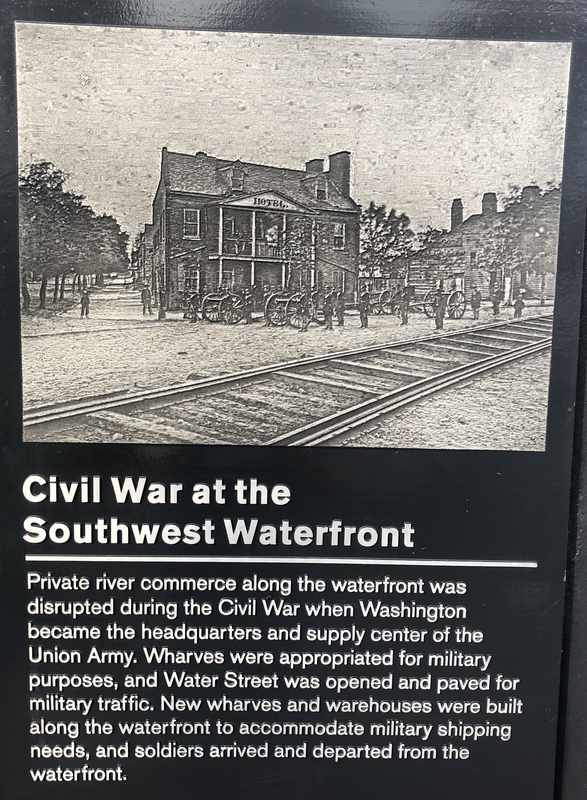 |
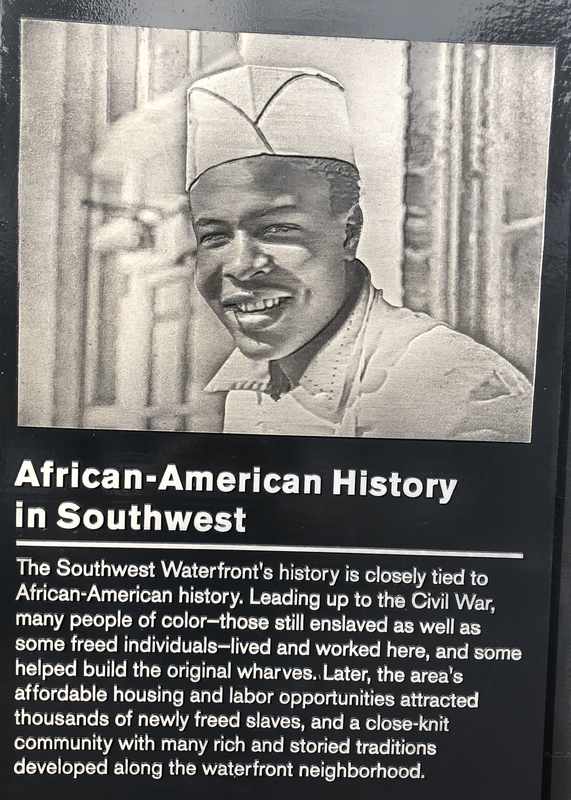 |
African American History in SouthwestThe Southwest Waterfront's history is closely tied to African-American history. Leading up to the Civil War many people of color - those still enslaved as well as some freed individuals - lived and worked here, and some helped build the original wharves. Later, the area's affordable housing and labor opportunities attracted thousands of newly freed slaves, and a close knit community with many rich and storied traditions developed along the waterfront neighborhood. |
Urban RenewalBefore the 1800s, the Southwest Waterfront formed the eastern bank of the Potomac, but sediment accumulated as farming increased, making the river hard to navigate and prone to flooding. In 1882, plans to dredge the river were approved, with materials deposited on nearby mudflats, creating Potomac Park, thereby establishing the Washington Channel as well as the Tidal Basin. |
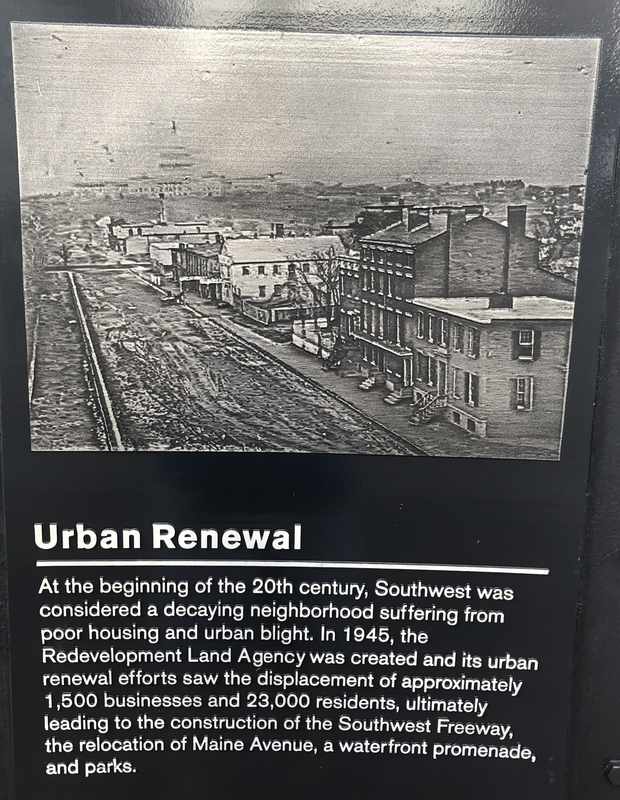 |
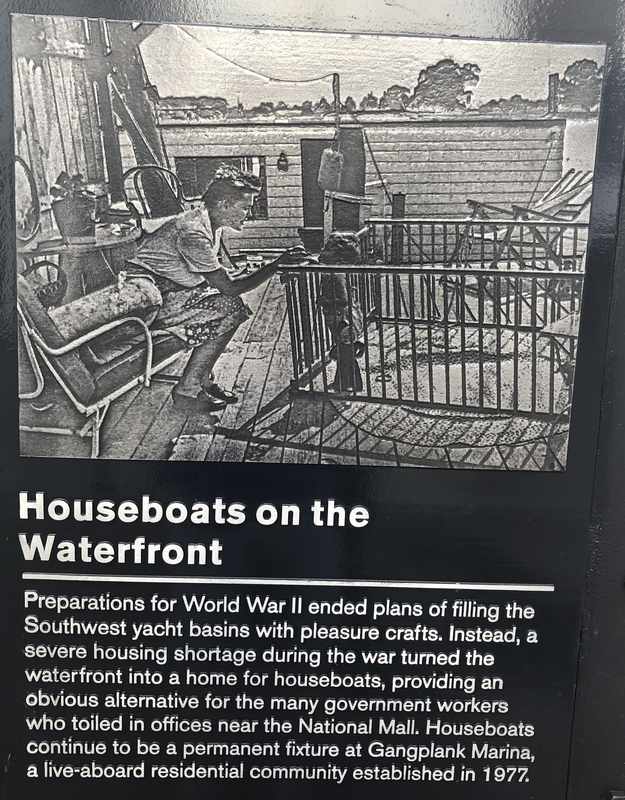 |
Houseboats on the WaterfrontPreparations for World War II ended plans of filling the Southwest yacht basins with pleasure crafts. Instead, a severe housing shortage during the war turned the waterfront into a home for houseboats, providing an obvious alternative for the many government workers who toiled in offices near the National Mall. Houseboats continue to be a permanent fixture at Gangplank Marina, a live-aboard residential community established in 1977. |

